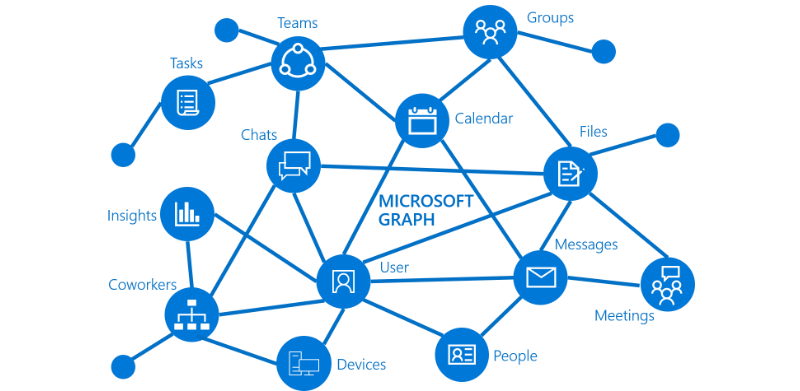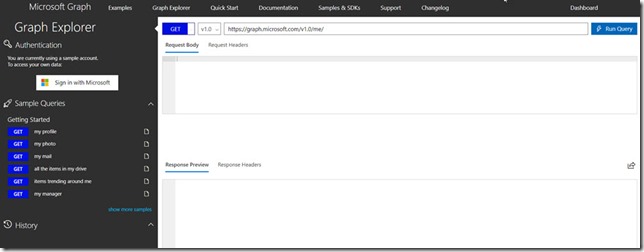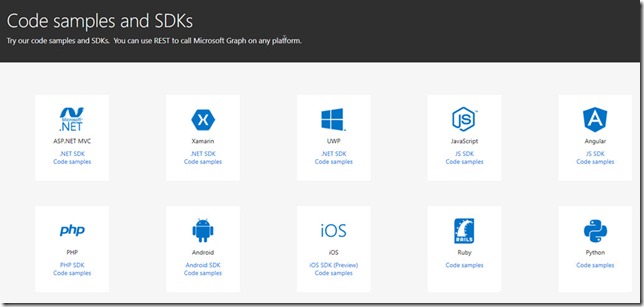Enterprise Microsoft Dynamics consultants and developers should sit up and pay attention to Microsoft Graph, a briefing
If you are involved in business software then Microsoft Graph is a really big deal, so sit up and pay attention! Graph is quickly becoming the all pervasive API for access/control of the Microsoft cloud products and services. This is going to encompass Azure AD, Excel, Outlook, OneDrive, OneNote, SharePoint sites/lists, Planner, machine learning, business intelligence, Dynamics ERP products, cognitive services, users, Insights, Microsoft Teams and lots more, as they are added. I have noticed Microsoft Graph being mentioned more and more, so thought it about time I briefed other technologists working in or on behalf of enterprises about its importance.
What is Microsoft Graph?
Microsoft Graph is the API of APIs, a key enabler of next generation computing with machine learning, BI and more. It is a single consistent API endpoint that provides access to a candy store of Microsoft cloud technology. It is a robust, well designed and strictly curated API, that is encompassing access to all the progressive Microsoft applications and services in the cloud. New services and applications are being rapidly added to Microsoft Graph all the time. Both end users and independent software vendors (ISV) have a need to integrate with the new fleet of cloud products and Graph can be thought of as a menu of services and products from which you may peruse, pick and choose from. From these selections, innovative solutions to your or your customers’ business needs can be devised. Microsoft Graph is your entry point to this world. Perhaps now you can start to see how important it is to keep an eye on Microsoft Graph as it matures and evolves.
Graph is one of those cases of the sum of the whole being greater than the individual parts. Graph enables consumers of the API to segue contextually and effortlessly between related data in the Graph, examine the Microsoft Graph graphic below to get the idea.
Some highlights of Microsoft Graph include:
- Office 365 Groups
- BI Reporting
- OneDrive
- File storage
- Excel and office
- Sharepoint sites
- Microsoft Teams
- Insights
- Outlook
- People (users)
- Dynamics products (e.g. Dynamics endpoints (NAV) coming soon…)
Design
Access to the API is kept simple with straightforward (REST) HTTP endpoints with easy to process, familiar JSON responses, this makes it easy for different devices and platforms to consume services utilizing the API. To ensure traversal of the Graph is made easy, product teams implementing the Microsoft Graph for their product are required to; abide by strict naming conventions, versioning rules, philosophy and data typing. The result provides the consistency and quality required to enable effortless consumption of information from different facets of the Graph for single purposes.
In a session that I recently attended, the Dynamics NAV team were describing the experience of getting the NAV ERP product onto the Graph. It sounded like the Graph team expect a high standard from those wanting to be a part of it. For example there are performance targets to meet, responses to API calls within 20ms, that can be a challenge in ERP scale, breaking changes on the API between versions are certainly a no, no too!. Lets face it, the Graph team are in a position to call the shots, as a product is not a first class player on the Microsoft Platform if it is not on the Graph. Thus in the new era, for those at Microsoft, long term future of your particular product may depend on engaging with Microsoft Graph.
Leave and resume
Not only is the aim for Microsoft Graph to be central to the cloud services and products, indeed it looks like with Project Rome, this Graph also is to be central to windows operating system too. It becomes the technology used to hold state for the operating system to allow hand off between devices and instances of windows as users move between them. Thus allowing users to pick up on another devices where they left off on a previous device, no matter what the operation you were performing. It will also be the glue allows the devices to communicate instructions between each other, thus for example it could provide instructions from your laptop to your Xbox games console, binding disparate devices together. Applying these concepts to business this becomes very powerful with lots of potential. Think of typical workflows through a business and the movement of individuals in that business, but with Microsoft Graph coordinating the the information flows and performing operations on them. Talking of workflow, Microsoft Flow can be extended with the Microsoft Graph (see references). Multi-device experiences are now easily in reach of us all!
Microsoft Graph and the Enterprise
So as a end user or Microsoft Dynamics partner you may start to see how important it is to have an understanding of the Microsoft Graph! It is the key to the engine, enables integration and interaction with the Microsoft services. Business intelligence driven from cognitive services or machine learning will take on more business decision making as it matures. It will commonplace and essential due to companies striving to differentiate themselves or seeking competitive advantage, so the Graph will be critical in delivering those experiences and services to the business. ISVs will also need to develop competencies with integrating the Microsoft Graph, it will be key to developing new generation business solutions. We may see Dynamics NAV shortly becoming another part of the graph that may make it discoverable to more companies by them stumbling into using ERP while using the Graph. The distinction between products and services are bound to blur over time, leaving less distinctly defined products. It certainly brings us yet another step nearer to a world where CRM/ERP/Office/BI/Cognitive Services/Machine Learning/Office products/IoT blur together into one another now becoming a platform offering. I still see the need for “consultants” or “specialists” that can help companies navigate and translate best use of the open ended possibilities they will then be faced with into business solutions. There will also be spaces for the ISV to address verticals by adding thier own value and in other cases punch out of the graph into the “real world”. This is going to be a new shape of enterprise software solutions, keep up with the changes!
If you are a developer or interested in integrating with Graph please read on…
Extending Microsoft Graph
The Graph may also be extended by developers or technical minded users via extensions, with their own application data adding custom properties to Microsoft Graph resources without requiring an external data store. Examples are storing user profile information in the graph by extending the user resource.
- open extensions: A good way for developers to get started.
- Schema extensions: A more versatile mechanism for developers who care about storing typed data, making their schema discoverable and shareable, being able to filter, and in the future, being able to perform input data validation and authorization.
So it can be seen how consuming the Graph API is easy, compared to integrating with all those product APIs individually and dealing with trying to tie them together yourself.
Getting Started
The excellent Graph developer site is here https://developer.microsoft.com/en-us/graph
It contains a wealth of information to get you started, such as samples and the explorer tool, the Graph explorer is an “in browser” tool for exploring the API.
There are samples and SDKs available there too for different languages to get you running quickly along with plenty of documentation sections.
Note:
Graph formerly known as the Office 365 Unified API.
Reference material:
Microsoft Graph APIs: The Glue That's Starting to Stick
Build Intelligence with Microsoft Graph
Add custom data to resources using extensions
Extend Microsoft Flow with the Microsoft Graph
If you found this helpful or interesting then please comment as it helps motivate me to write more!




